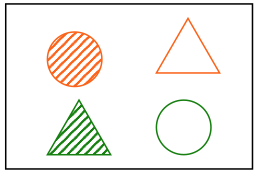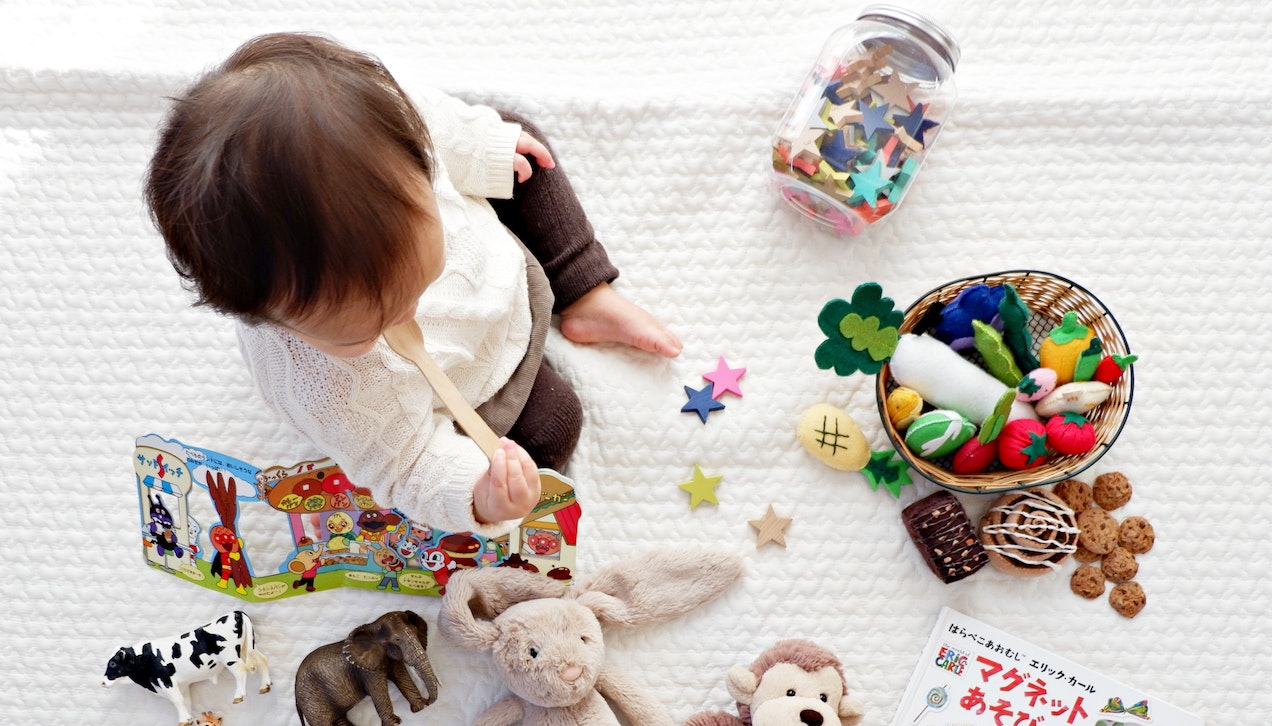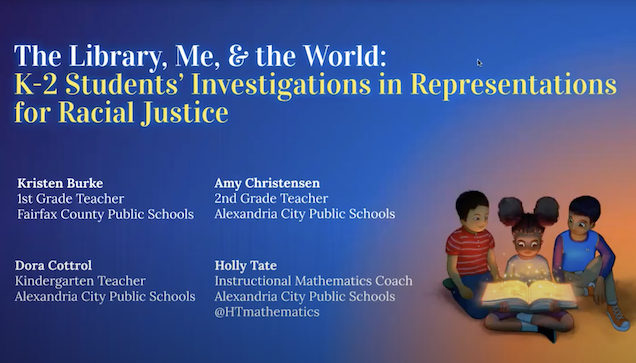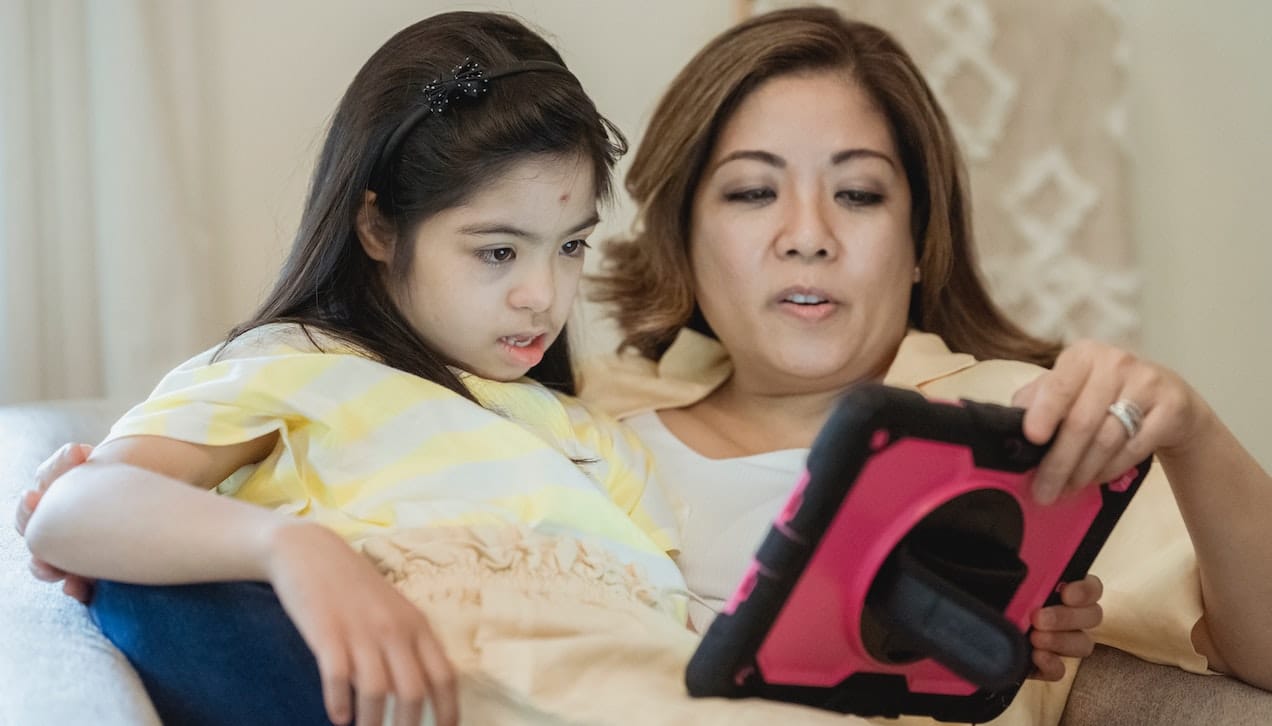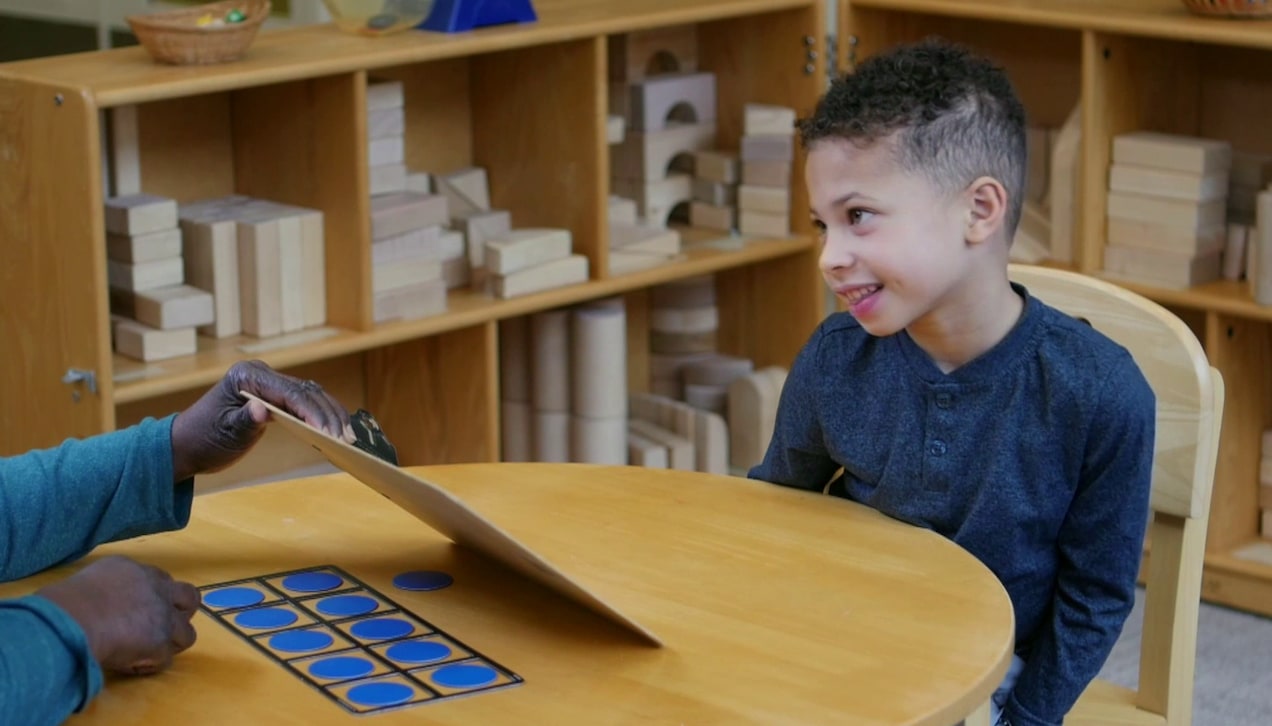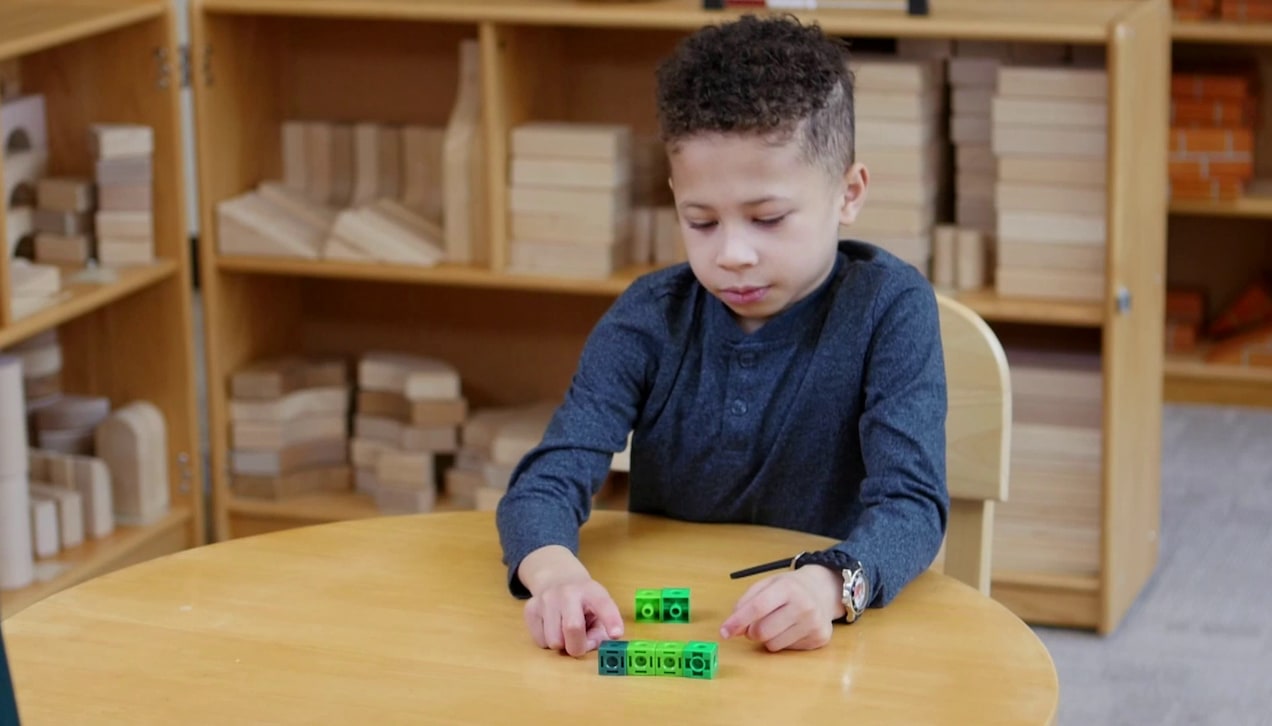Professional Learning Modules
Sets
Instructions
Each module begins with an introduction video, and then a 20-30 minute presentation. After those are the complimentary videos and materials you see below, such as Focus on the Child videos and ideas to help you Look for Math All Around You. So please review the introductory video and text and launch the Sets presentation when you are ready.
About this module
Sets are basic to children’s thinking and learning. They are also basic to our number system. One of the most important jobs of each number is to describe “how many” there are in a set of things. Before we can figure out how many apples there are, we have to decide which things are apples, and which are not. Once we’ve created the set of things that are apples, perhaps by separating them from the oranges, then we can count them. Counting requires a set, and as a result, the properties of sets have a large influence on mathematics.
Focus on the Child
Focusing on children’s mathematical thinking is big.
These videos are taken from our Focus on the Child video series. They are one-on-one interviews with individual children. The interviews are designed to elicit evidence of children’s mathematical thinking. They are not teaching episodes or formal assessments.
Overall guiding questions as you watch them include:
- Where is the math?
- Which big ideas does this child understand?
- What evidence do you see of the child’s thinking?
- Where is this child along the developmental trajectory?
- How would you assist the child to enhance understanding?
Focus on the Lesson
Focusing on the lesson is big.
These videos are taken from our Focus on the Lesson video series. They represent planned activities for children designed to teach specific mathematical ideas that can compliment (not replace) existing math curricula. Overall guiding questions as you
watch the video includes:
- What evidence do you see of the children’s thinking?
- What evidence do you see of the teacher’s thinking?
- How might this experience connect to other math?
People Sort: Details
Big Idea Focus
In this lesson, children:
Identify and describe observable attributes of children and clothing Physically form sets according to given attributes Use rules to sort and re-sort each other into sets using various attributes (KG goal)
Materials:
- Five Creatures by Emily Jenkins
- Two large circles made with masking tape or yarn for children to stand in, or two hula-hoops
- Dress-up clothes (for children wearing school uniforms)
Planning Tips
Read Five Creatures at least once prior to this lesson. It is best to introduce this activity with a group of about 10 children. Later, this is a good whole-group or transition activity. For example, call all children with tie shoes to line up, then children wearing shoes with straps.
People Sort: Video
[one_third]
Listen before viewing
[/one_third]
[one_third]
[/one_third]
[one_third_last]
Listen after viewing
[/one_third_last]
Questions to Answer
- children label attributes
- children define attributes
- children make sets
- teacher does activity with small group of children
- teacher focuses children on observable attributes
- teacher labels the set created
- builds understanding of the concept of attribute, which is key to all areas of mathematics.
Look for Math All Around You
Helping children find math all around us…
Organized by different areas of the classroom, Math All Around You sections are meant to be idea generators. For each area, there are ideas of what children might be saying or doing mathematically and what teachers might say or do to build understanding. These are not intended to be checklists, but rather a jumping off point for discussion of how adults can “mathematize” the world around them.
Children's Literature: Data, Attribute & Pattern
Finding math in the books we read…
Good math can be found in good children’s books! Below is a list of books that are rich in opportunities for mathematical thinking and math talk. They serve as jumping-off points for engaging math activities and math discussions. They are not books that explain math to children, which are already found in the various curriculum but can often be lacking in chances to inspire children in a more fun, meaningful, and concrete way.
Aardema, V. & Vidal, B. Bringing the Rain to Kapiti Plain. (Puffin Books, 1992)
This classic cumulative rhyming tale shows one form of growing pattern.
Aston, D. & Long, S. An Egg is Quiet. (Chronicle Books, 2006)
Descriptions of many sorts of eggs could lead to discussion of attributes or questions to answer with data.
Carle, E. Today is Monday. (Philomel Books, 1997)
Another rollicking cumulative rhyme to show the idea of a growing pattern.
Geringer, L. and Lobel, A. A Three Hat Day. (HarperCollins, 1987)
Questions to answer with data: How many hats do you have? What different kinds of hats do you have?
Hoban, T. is it red? is it yellow? is it blue? (Greenwillow, 1978)
Beautiful photos inspire exploration of color and other attributes.
Komiya, T. Life-Size Zoo. (Seven Footer Kids, 2008) Komiya, T. More Life-Size Zoo. (Seven Footer Kids, 2010)
Lots of information about animals to stimulate discussion, analysis, and further data collection.
Martin Jr, B. & Carle, E. Baby Bear, Baby Bear, What Do You See? (Henry Holt, 2007)
Martin Jr, B. & Carle, E. Brown Bear, Brown Bear, What Do You See? (Henry Holt, 1967)
Martin Jr, B. & Carle, E. Panda Bear, Panda Bear, What Do You See? (Henry Holt, 2003)
Martin Jr, B. & Carle, E. Polar Bear, Polar Bear, What Do You Hear? (Henry Holt, 1991)
All four of these favorites follow a different, yet similar, repeating pattern.
Morris, A. & Heyman, K. Hats Hats Hats. (Lothrop, Lee and Shepard Books, 1993)
Morris, A. & Heyman, K. Houses and Homes. (HarperCollins, 1995)
Morris, A. & Heyman, K. On the Go. (HarperCollins, 1994)
Morris, A. &Heyman, K. Shoes Shoes Shoes. (HarperCollins, 1998)
Different examples of the same class of object from around the world to motivate data collection close to home.
Swinburne, S. Lots and Lots of Zebra Stripes. (Boyds Mills Press, 2002)
Photos of patterns in nature to encourage young pattern noticers and pattern describers.
Swinburne, S. Whose Shoes? (Boyds Mills Press, 2010)
Photos and simple text spur children to consider questions about shoes and jobs.
Williams, S. & Vivas, J. I Went Walking. (Harcourt, 2004)
This story shows the simple growing pattern of “one more.
Adult Learning Activities
Learning as an adult…
Adult Learning Activities get adults engaged in doing math as adults. While they involve basic math concepts, they are not children’s math that we are asking adults to do; nor are they activities to try with young children. They are designed so that they:
- are based on a central and coherent concept of the discipline being explored;
- pose a puzzle or problem;
- are interesting/non-routine enough to capture and retain adult attention;
- clearly focus thinking on the relevant content/ideas;
- are easy to implement in an adult PD setting;
- may have more than one solution or route to solution;
- set the stage for understanding foundational Big Ideas.
Focus on the Child with Viewing Notes
Related Ideas
Collaborative Math: Creating Sustainable Excellence for Head Start Programs
Early childhood center leaders play a crucial role in improving and sustaining program quality. New research supports the idea that More →
- Series: About the Collaborative
- Age/Grade Level: Pre-K
Racial Justice in Early Math Resource List
One important component of racial justice work is the commitment to continuous learning and reflection. Regardless of how long you More →
- Series: Racial Justice
- Age/Grade Level: Adult Learners
Noticing Same and Different: The Concept of Comparison with Infants and Toddlers
“More” is often one of children’s first words. Infants attend to differences, though they don’t yet discriminate between “more” as More →
- Series: Focus on the Child
- Topics: Number Sense
- Age/Grade Level: Infants Toddlers
- Comparing
Using Math to Learn about Racial Representation in K-2
RJEM at Work highlights the everyday efforts of caregivers, community organizations, teachers, researchers, and educational institutions to promote racial justice More →
- Series: Racial Justice
- Age/Grade Level: Adult Learners
RJEM in 12: Dr. Danny Bernard Martin on the Growing Amount of Research on Racial Justice
In this interview, we talked with Dr. Danny Bernard Martin, professor of Mathematics and Education at the University of Illinois More →
- Series: Racial Justice
- Age/Grade Level: Adult Learners
How to Use Digital Photos to Build a Mathematical Language Routine for Kids
It turns out that mathematical thinking is developed in conversation with others; asking students “how do you know that?” will reveal a child’s mathematical reasoning skills. The ability to explain one’s thinking is a cognitive leap that requires protected time for meaningful conversation.
- Series: Ideas at Work
- Topics: Sets Number Sense
- Age/Grade Level: Pre-K Kindergarten 1st Grade 2nd Grade 3rd Grade
- English Language Learner, Number Talks
Benchmarks of 5 and 10 with Child 39
This child uses the visual arrangement of a ten frame to conceptually subitize quantities into the teen numbers. He recognizes More →
- Series: Focus on the Child
- Topics: Number Operations
- Age/Grade Level: Pre-K Kindergarten
- Child 39
Solving a Problem with Both Parts Unknown with Child 39
This child encounters a new type of problem situation: a part-part-whole story where both parts are unknown. He is uncertain More →
- Series: Focus on the Child
- Topics: Number Operations
- Age/Grade Level: Pre-K Kindergarten
- Child 39
